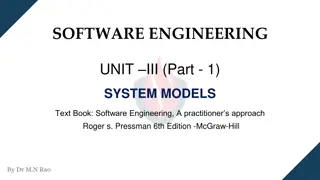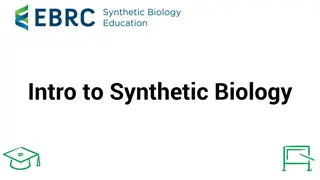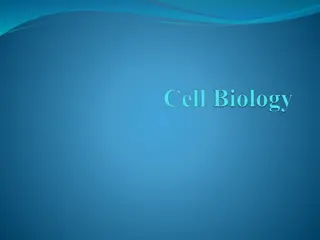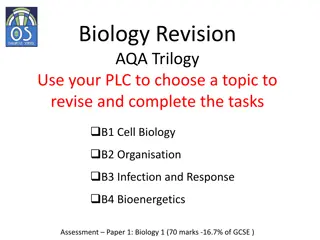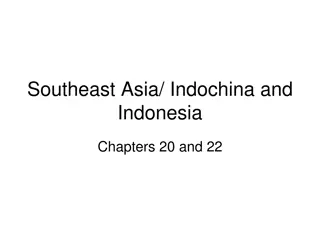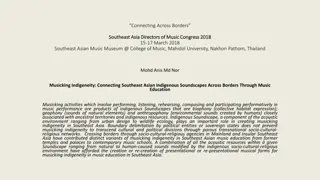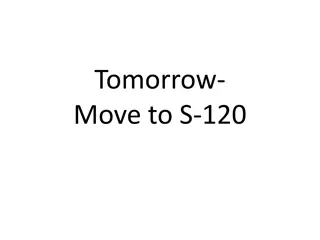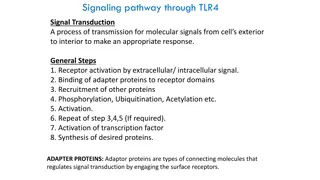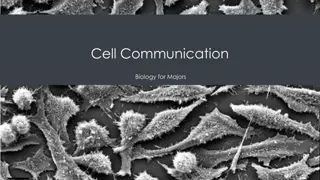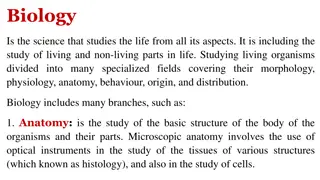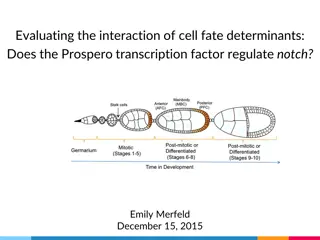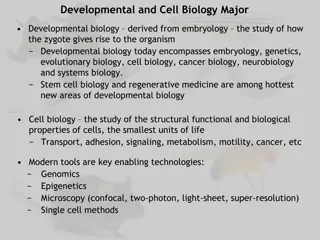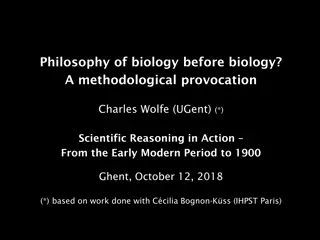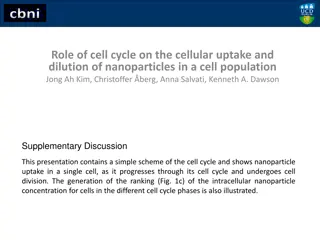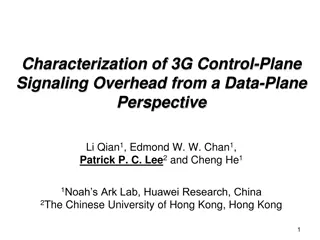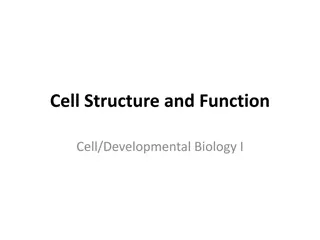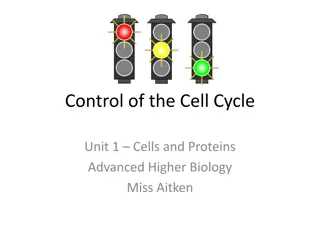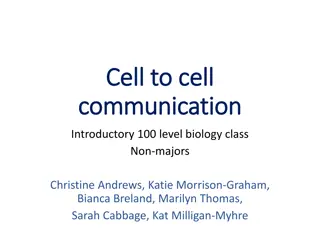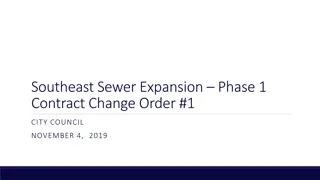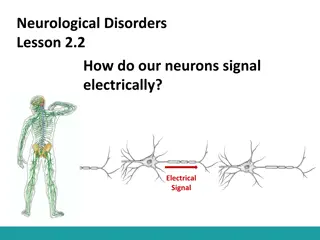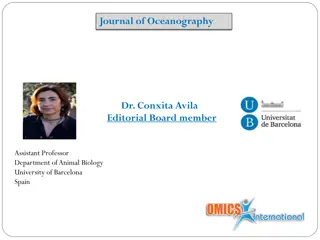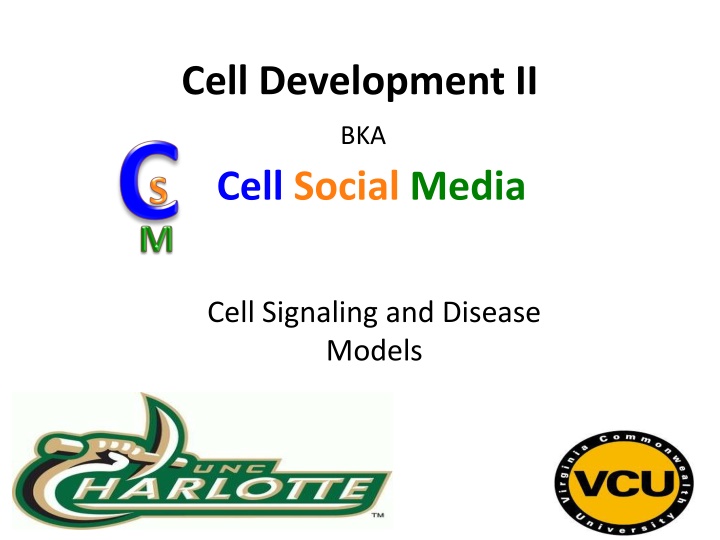
Cell Signaling and Disease Models in Biology Classes
Explore the fascinating world of cell signaling and disease models through a comprehensive biology course focusing on signal transduction, regulation, and response. Engage in hands-on activities to diagram signaling pathways and deepen your understanding of how disruptions can impact cellular responses.
Download Presentation

Please find below an Image/Link to download the presentation.
The content on the website is provided AS IS for your information and personal use only. It may not be sold, licensed, or shared on other websites without obtaining consent from the author. If you encounter any issues during the download, it is possible that the publisher has removed the file from their server.
You are allowed to download the files provided on this website for personal or commercial use, subject to the condition that they are used lawfully. All files are the property of their respective owners.
The content on the website is provided AS IS for your information and personal use only. It may not be sold, licensed, or shared on other websites without obtaining consent from the author.
E N D
Presentation Transcript
Cell Development II BKA Cell Social Media Cell Signaling and Disease Models
Group Members Nishi Bryska, UNC Charlotte Sharon Bullock, UNC Charlotte Katie Crump, VCU-IRACDA Teshell Greene, VCU-IRACDA Derek Kendig, VCU-IRACDA Michelle Pass, UNC Charlotte Facilitator: Suann Yang, Presbyterian College
Context of the Teachable Unit General biology major s class (cell biology section) Target class size is 60 students, with 10 working groups of 6 students each Co-requisite coursework: general chemistry A one semester course, 2 lectures at end of the semester. 5 hours class time total, 10 hours out of class time.
Learning Goals Students should understand 1. How a signal is transduced, relayed, and amplified to lead to a biological response. 2. The regulation and termination of a biological signal and response in normal and diseased states. 3. How cell signaling regulates homeostasis.
Tidbit Objectives Students should be able to: 1. Describe how a message is communicated. 2. Diagram a signaling pathway. 3. Predict how disturbing the components of the pathway will affect cell signaling response.
Prior Knowledge Gained Cell signaling terms Protein-protein interactions Receptor Ligand and how it interacts with receptors Signal relay and response Cell membranes are selectively permeable Extracellular signals elicit cellular responses Basics of regulation
Generic Signal Pathway Signal Mom Receiver Response Relay/ Transducer
Group Work (4 mins) Diagram a Signaling Model Using The Shapes Provided -Take shapes out of the envelope -Use shapes to model the pathway
Extracellular Fluid Response Cytosol
Group Work (4 mins) Diagram a Signaling Model Using The Shapes Provided -Take shapes out of the envelope -Use shapes to model the pathway Hint: Orange = same type of molecule
Extracellular Fluid Response Cytosol
Real World Scenario For upcoming polls please enter the site http://www.pollev.com into your web browser or set your phone up to text message the number 37607 as the phone number.
Clinical Scenario In diabetes the response of one important pathway is to transport glucose from the extracellular fluid (ECF)/blood into the cytosol of cells. This pathway becomes disrupted as part of diabetes.
Insulin Extracellular Fluid Sugar Insulin Receptor Cytosol
Insulin Extracellular Fluid Sugar Insulin Receptor Response Cytosol
Insulin Extracellular Fluid Sugar Insulin Receptor Response Cytosol
Insulin Extracellular Fluid Sugar Insulin Receptor Response Cytosol
Insulin Sugar Extracellular Fluid Sugar Insulin Receptor Sugar Response Cytosol
Insulin Extracellular Fluid Sugar Insulin Receptor Response Cytosol
Insulin Sugar Extracellular Fluid Sugar Insulin Receptor Sugar Response Cytosol
Type II Diabetes The process of glucose accumulation in the extracellular fluid or blood is due to insulin resistance (inactivation of receptor) Glucose level
Acknowledgements HHMI SI and Dr. Kathrin Stanger-Hall Suann Yang Cell Development I (Group 1) Evolution Group (Group 4) Dean of the College of Arts & Sciences at UNC Charlotte Dr. Nichols-Casebolt at VCU and the Office of Research

